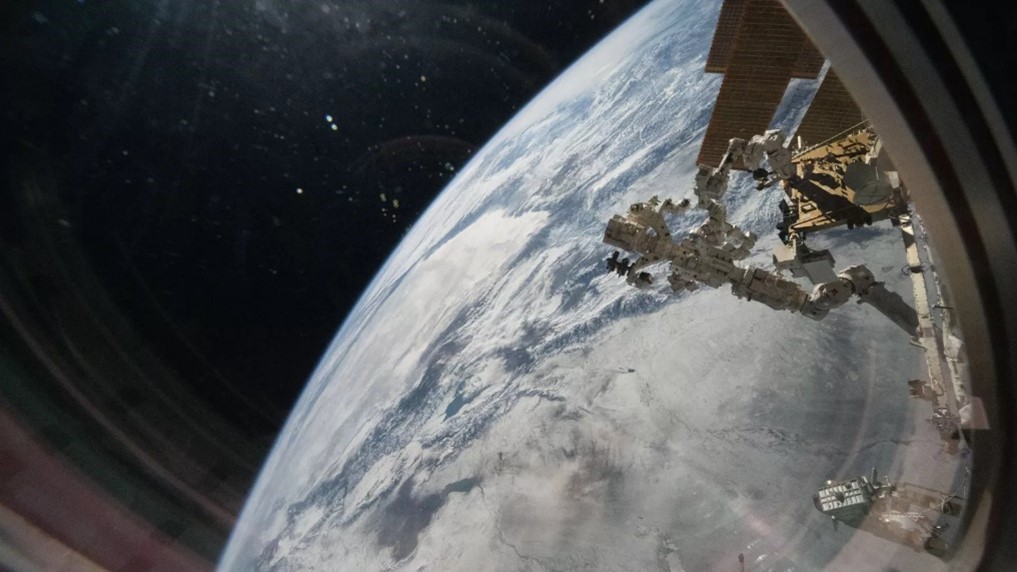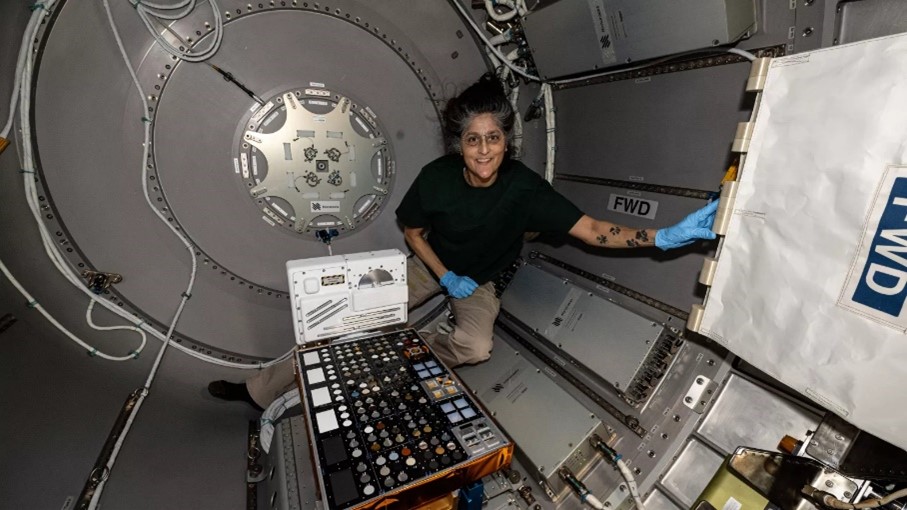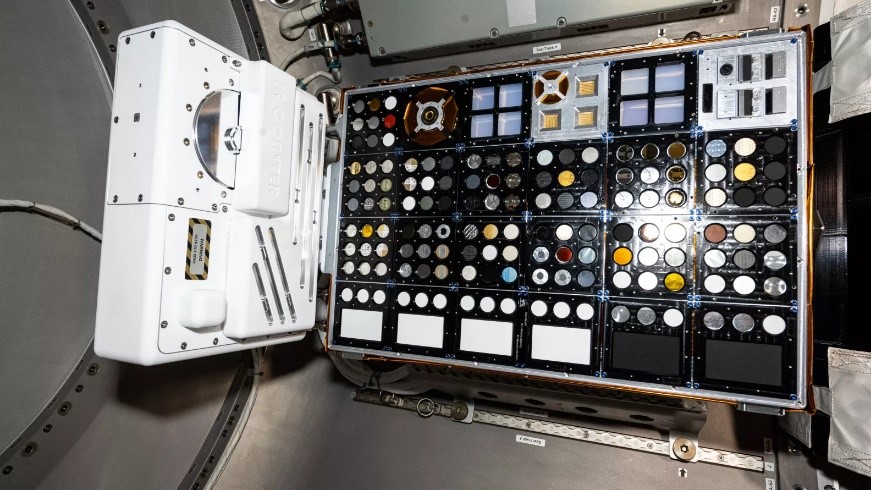
Location of the SESAME platform outside the ISS on the Bartolomeo module.
Photo credit: EMA : Measuring material ageing in space from the ISS | CNES
As part of a project with EMPA (Federal Institute of Materials Science and Research) and ESA (European Space Agency), samples of palladium and platinum-based metallic glass have been launched into space!
The purpose of this project is to understand how materials behave in space, in order to select the most suitable ones for use in this harsh environment: they are exposed to radiation, vacuum, but also to extreme temperatures ranging from -150°C to +150°C, depending on whether the ISS (International Space Station) is exposed to the Sun or in the shadow of the Earth. There is also the risk of being hit by tiny satellite debris, for example.
The first phase of the project consisted of a testing of the materials on Earth to ensure their compatibility with space and, of course, to verify the absence of any risk for the ISS and the astronauts. 141 samples were selected for exposure outside the ISS, including the palladium based alloy (the platinum based alloy is also qualified but is a spare sample).
In December 2024, samples of metallic glass, alloyed at PX Precinox foundry, casted at the PX Services R&D laboratory, and machined at PX Precinox, were loaded onto a Space X rocket bound for the ISS.

The SESAME platform (Space Environment Study of Ageing of MatErials) was assembled on the ISS by American astronauts Sunita Williams and Don Pettit on 13 December 2024 and installed on the external Airbus Bartolomeo platform by the robotic arm on 16 December 2024.
With SESAME, engineers from the CNES, ESA and the project partners will be able to analyse how different materials behave when exposed directly to the space environment. The physical and physico-chemical properties of the materials (such as their thickness, mass and thermo-optical properties) will be compared before and after the flight. The impact of debris or micrometeoroids will also be studied. This data will be useful for the design and selection of materials of future orbital systems.
The platform is expected to return to Earth within 12 to 18 months. We are looking forward to seeing how the metallic glass has fared during its extended stay in space. One of the interests of metallic glasses is that, unlike most metals, their mechanical behaviour is stable from -150 to +150°C. They are also very resistant to corrosion and erosion, which makes them ideal candidates for this type of environment.

Sesame module with the various samples selected after assembly
Photo source: EMA: measuring the ageing of materials in space from the ISS | CNES

